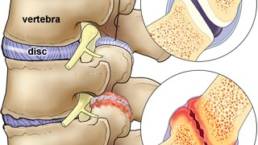Headaches and dizziness can be caused by a variety of factors. Occupational Therapists assist with this by analysing your activities of daily living and making the necessary adjustments. Occupational therapy treatment for headaches and dizziness consists of the following:
TRIGGER POINT THERAPY
Occasionally, the headaches may derive from trigger points located in our neck and shoulder. As a result the muscles become much tighter and can restrict blood flow, occasionally causing dizziness. Trigger point therapy consists of sustained deep pressure into the trigger points of the muscle which may be causing the headache. The headache referrals should alleviate shortly after applying the technique.
DAILY LIVING ACTIVITY ANALYSIS
Occupational therapy aims to identify daily activities which may be increasing your likelihood of developing trigger points and experiencing headaches and dizziness. These activities involve sleeping, exercise, driving position and work-related tasks. After identifying these factors, adjustments are made based on the individual and may include pillow recommendations, adjustments to driving position or work-related restrictions.
ERGONOMIC ASSESSMENTS
Desk based work is a heavy contributing factor to musculoskeletal injuries. Our occupational therapists conduct ergonomic assessments to analyse all factors of your desk space. For headaches and dizziness, we would primarily observe monitor height, positioning and brightness, to analyse the risk of screen induced fatigue, eye-strain and headaches.
For more information and/or help with your headaches and dizziness book in a consultation with one of our practitioners today.
Related Posts
Omega 3 and Brain Function
1 August 2019
Everyone is very concerned with their omega 3 levels and rightly so. Omega 3 is such an important nutrient that our body requires but are we getting enough? And is what we are getting good enough for our bodies? Research has shown omega 3 fatty acid status correlates positively with brain…
0 Comments1 Minutes
What is Facet Syndrome?
27 April 2018
Facet joints are the joints between two vertebrae in your spine that allow and support movement such as bending and twisting. These joints can become inflamed resulting in restricted movement, pain and stiffness. Pain stemming from these joints is commonly referred to as Facet joint syndrome.
0 Comments3 Minutes


